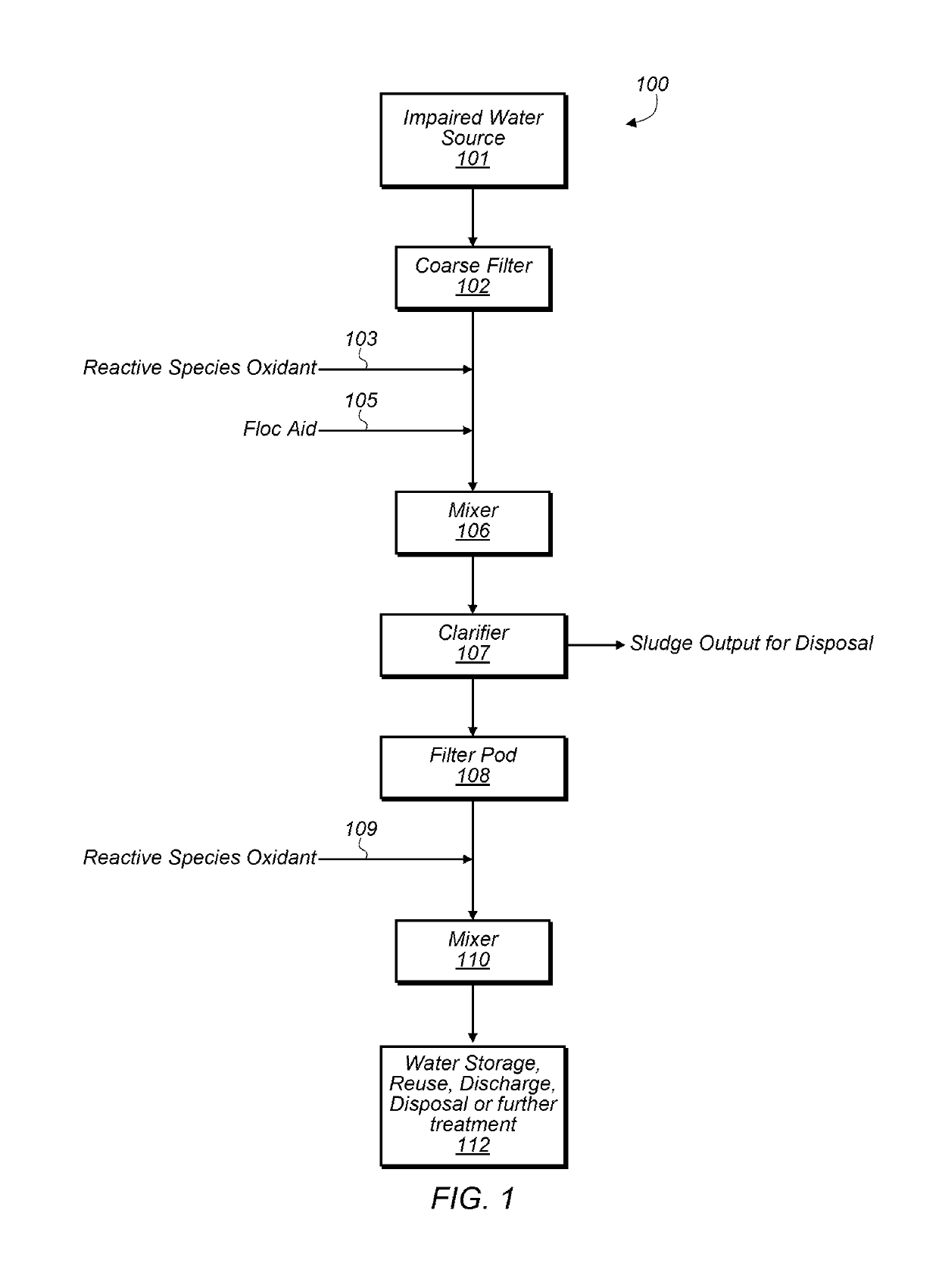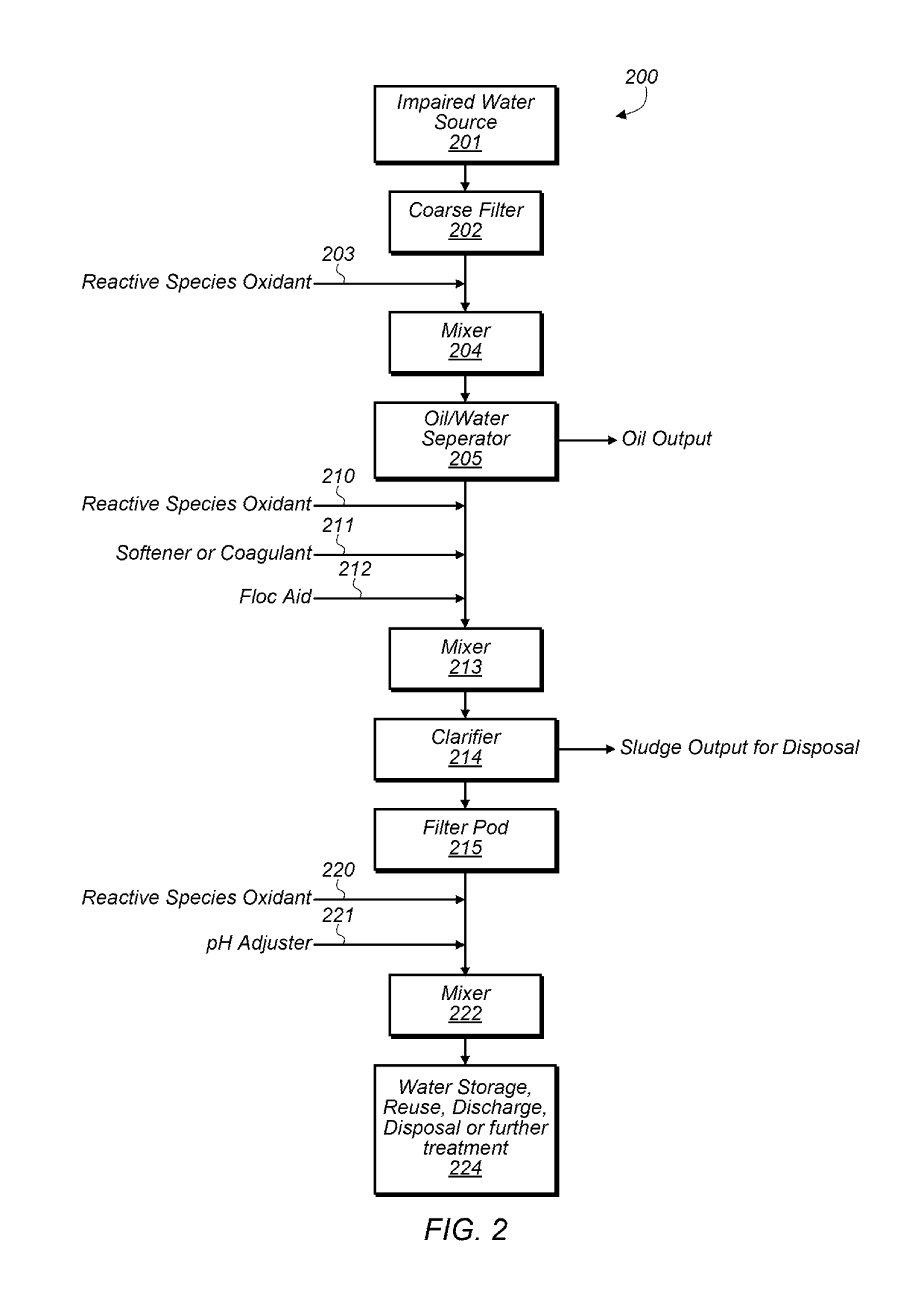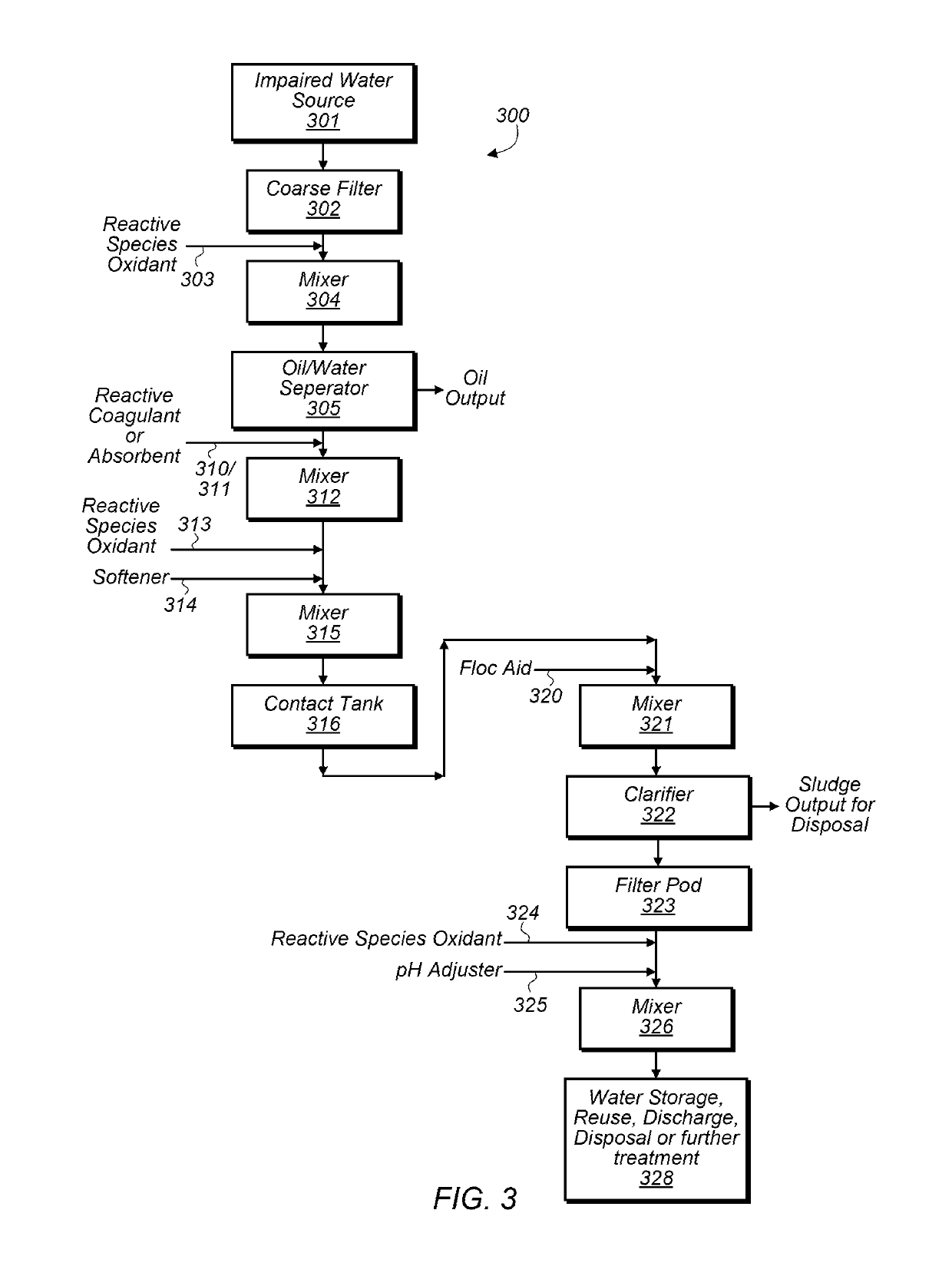Systems and method of water treatment utilizing reactive oxygen species and applications thereof
a reactive oxygen species and water treatment technology, applied in the field of water treatment, can solve the problems of limited options, limited shelf life, low mobility of oxidants, etc., and achieve the effects of enhancing water pretreatment, enhancing water clarification and/or microbial control, and enhancing separation and recovery of oil
- Summary
- Abstract
- Description
- Claims
- Application Information
AI Technical Summary
Benefits of technology
Problems solved by technology
Method used
Image
Examples
embodiments
[0059]In some embodiments, oxidation chemistry may be used for separating and clarifying impaired water, reducing biological growth, and breaking emulsions. The oxidation chemistry used may have minimal impacts on pH and scaling potential of fluids. A relatively short-lived active oxidant may be a benefit for avoiding negative impacts on hydrocarbon quality and for minimizing oxidant corrosivity and environmental impacts. Selectivity of the oxidation chemistry towards different materials is also desirable for efficiency of oxidant use, compatibility with a variety of materials and avoidance of unnecessary or undesirable side reactions. Oxidant solutions that generate a variety of reactive oxygen species (ROS) in their treatment environments may be good candidates for achieving some or all of these attributes.
[0060]ROS may be generated in-situ by several chemical methods including the Fenton catalytic cycle with hydrogen peroxide and iron catalysts (produces hydroxyl and superoxide r...
example 1
Oil Separation Accelerated Emulsion Breaking, Improved Oil-Water Separation and Separation of Impurities from Oil with Oxidant
[0171]A water sample originating from the Eagle Ford formation in South Texas, USA contained 35 to 40% by volume oily fraction. The water sample was thoroughly mixed and 500 mL dispensed into 1 L beakers to conduct tests using a Phipps and Bird programmable jar tester. The jar tester was programmed for a rapid mix of intermediate shear force at 115 rpm impeller speed for 1.25 minutes, rapid enough to blend the oily and water fractions completely, followed by a low shear impeller speed of 5 rpm for 10 minutes to promote coalescence. All tests were conducted at room temperature, 20-25° C. The 500 mL oil-water samples were dosed with varying amounts of sodium peracetate oxidant solution during the rapid mix from an oxidant solution that was 2.1% wt / vol sodium peracetate (1.6% wt / vol measured as peracetic acid (PAA)). The volume of water relative to the oily laye...
example 2
Oxidant Dose Concentration Determines Selectivity for Separation of Mostly Organic / Oil Materials Vs Organic and Iron Sludge Formation
[0173]A water sample originating from the Piceance basin formation in CO, USA contained a suspended black organic material (very fine particles and a small amount, less than 0.5% vol / vol, of free oil). The water sample was thoroughly mixed and 500 mL dispensed into 1 L beakers to conduct tests using a Phipps and Bird programmable jar tester. The jar tester was programmed for a rapid mix of high shear force at 295 rpm impeller speed for 1.25 minutes, followed by a low shear impeller speed of 25 rpm for 10 minutes to promote coalescence and floc formation. All tests were conducted at room temperature, 20-25° C. The 500 mL water samples were dosed with varying amounts of sodium peracetate oxidant solution during the rapid mix from an oxidant solution that was 2.1% wt / vol sodium peracetate (1.6% wt / vol measured as PAA). Also during the rapid mix the jar sa...
PUM
| Property | Measurement | Unit |
|---|---|---|
| pH | aaaaa | aaaaa |
| pH | aaaaa | aaaaa |
| contact time | aaaaa | aaaaa |
Abstract
Description
Claims
Application Information
 Login to View More
Login to View More - R&D
- Intellectual Property
- Life Sciences
- Materials
- Tech Scout
- Unparalleled Data Quality
- Higher Quality Content
- 60% Fewer Hallucinations
Browse by: Latest US Patents, China's latest patents, Technical Efficacy Thesaurus, Application Domain, Technology Topic, Popular Technical Reports.
© 2025 PatSnap. All rights reserved.Legal|Privacy policy|Modern Slavery Act Transparency Statement|Sitemap|About US| Contact US: help@patsnap.com



